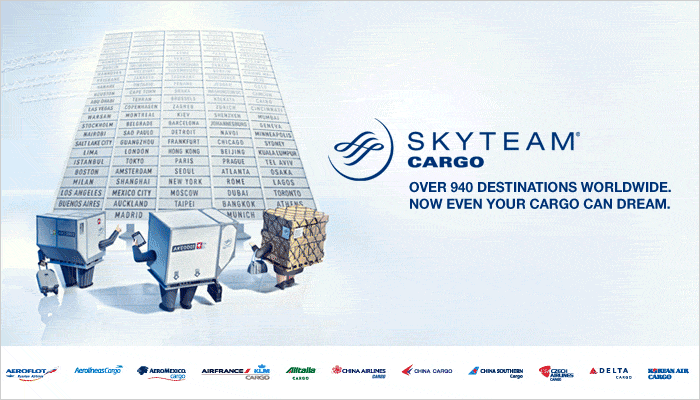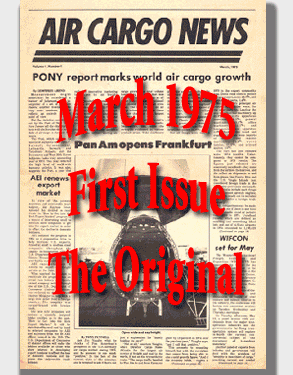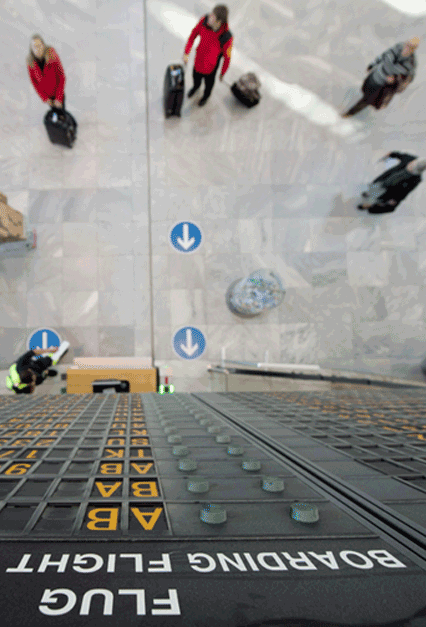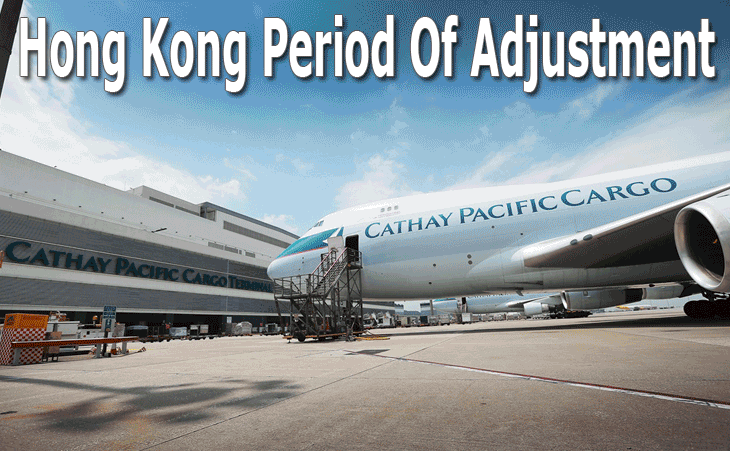
Cathay
Pacific Airways is struggling to bolster air cargo volumes even as it
expands its service network. But with a major fleet renewal program underway
and analysts claiming its freight division is acting as a drag on Group
profits, improvement will be needed this year.
Last month CX expanded its freighter services
into Latin America with a thrice-weekly scheduled service to Mexico City
from HKIA, increasing the frequency of its service to Guadalajara from
two to three freighter flights per week and starting a new freighter service
to Columbus, Ohio. The fleet is also being overhauled - CX expects to
be operating 14 B747-8Fs by 2016, while some 93 aircraft are due for delivery
from 2014 to 2024 to add to or replace its existing fleet of 140 wide-body
aircraft.
But while Cathay is expanding its international
freight horizons as new, more efficient, aircraft are delivered, cargo
volumes in 2013 disappointed. Uplift fell 5 percent in December, a month
in which many airlines and airports reported robust growth. Indeed, CX
and Dragonair combined volumes in 2013 were down 1.5% year-on-year despite
a 1.7% increase in capacity and the carriers’ much anticipated transfer
of operations within HKIA to the Group’s new Cathay Pacific Cargo
Terminal (CPCT).
 Further
year-on-year declines were registered in January (-1.4%) and February
(-2.4%). Cathay Pacific General Manager Cargo Sales & Marketing Mark
Sutch (right) said demand had failed to surge pre-Chinese New Year as
expected, and the anticipated pick-up after the holiday was also slow.
However, there was some sign of recovery in March when tonnage showed
a 13.8% increases on the back of an 18.8% increase in capacity measured
in available cargo-mail ton kilometers. Further
year-on-year declines were registered in January (-1.4%) and February
(-2.4%). Cathay Pacific General Manager Cargo Sales & Marketing Mark
Sutch (right) said demand had failed to surge pre-Chinese New Year as
expected, and the anticipated pick-up after the holiday was also slow.
However, there was some sign of recovery in March when tonnage showed
a 13.8% increases on the back of an 18.8% increase in capacity measured
in available cargo-mail ton kilometers.
Whether last month’s performance was
a blip or a sign that Cathay has turned a corner remains to be seen. But
what is clear is that the carrier’s freight performance has been
a cause of concern for some time. CX lost volume last year even though
total throughput at HKIA climbed 2.4% year on year to reach 4.12 million
tons, suggesting a loss of market share at its home hub. CX’s 2013
annual report revealed a 3.6% year-on-year decline in cargo revenue and
the airline admitted demand for its cargo services had been weak since
April 2011.
HSBC analysts said earlier this month that
CX’s poor cargo performance had capped its strong earnings recovery,
which has seen its passenger business outperform its peers in recent quarters.
The repercussions of another poor year for
Cathay’s cargo division, which generates around a fifth of its revenue,
will spread further than the airline.
After investing $760 million in CPCT –
which is managed by Group subsidiary Cathay Pacific Services Limited and
is designed to offer 2.6 million capacity per annum – the Group
can ill afford for its expensive facility, which became fully operational
last October, to have idle capacity. Yet without its parent airline delivering
substantially more throughput, CPCT will need to win a lot of third party
traffic from handling rivals at HKIA to bulk up throughput and provide
the Group with a viable return on its investment, an investment made in
part to help improve CX’s cargo efficiency and reduce costs in the
long term.
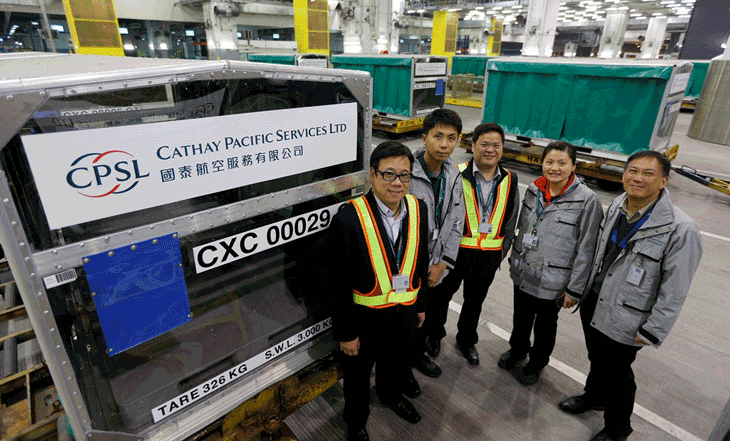 |
Algernon Yau, Chief Executive
Officer at Cathay Pacific Services Limited, is positive on 2014 but reluctant
to set specific targets.
“Cathay Pacific Cargo Terminal has
commenced the phase-in operations since February 2013 with a final cut-over
successfully completed in October last year,” he told FlyingTypers
earlier this year. “Around 600,000
tons of cargo throughput was handled throughout the year.
“Since full operations commenced in
October, we have been providing tailor-made services to our customers.
In view of the full-year effect, I am expecting a surge of tonnage throughput
at the Cathay Pacific Cargo Terminal in 2014.”
Clearly, any such surge through CPCT would
further add to the pressure faced by incumbent operators at HKIA in the
shape of Asia Airfreight Terminal and Hong Kong Air Cargo Terminals Ltd
(HACTL) given that growth in recent years has been slow and annual capacity
at HKIA is now a staggering 7.4 million tons.
Other Players
AAT, the smallest player at HKIA, would
not comment on its volume figures in 2013.
Unaudited figures from Bloomberg stated that Hactl saw monthly throughput
year-on-year losses hover between 28-40% from September to December as
CPCT came on stream and cargo was transferred by Cathay. Hactl is positive
that its own service record and the ongoing attraction of HKIA as a gateway
to China and other parts of Asia will stand it in good stead.
Chief Executive Mr. Mark Whitehead told
FlyingTypers that the loss of the vast majority of Cathay’s
cargo (Hactl will continue to handle Horses and Dangerous Goods for CX)
throughput after discounting Cathay tonnage grew 5.5% in 2013.
He argued the loss of CX throughput had
rendered year-on-year tonnage comparisons as “no longer relevant”.
He added: “In the short term it is unrealistic to replace the CX
tonnage. However, we continued to develop new businesses and extend our
services to existing airline customers. In November and December 2013,
we were appointed the ground handler by Jun Air and Aurora Airline. In
January, Kalita Air became a ‘one-stop-shop’ customer of Hactl.”
The handler has also been boosting its road
feeder links to mainland China via logistics subsidiary Hacis and expects
to benefit from a gradually improving market and announced earlier this
month that first quarter growth was up 11.4 percent year-on-year excluding
CX Group tonnage handled in 2013.
“We had a good start of the year with
some new airline customers and increased volume of our existing customers,”
said Whitehead. “In February, we successfully handled the second
largest horse shipment with 65 horses flying in to Hong Kong for an equestrian
event. The March tonnage was as high as the pre-Christmas peak in November
2013. The overall result of the first quarter was satisfactory."
SkyKing
|
